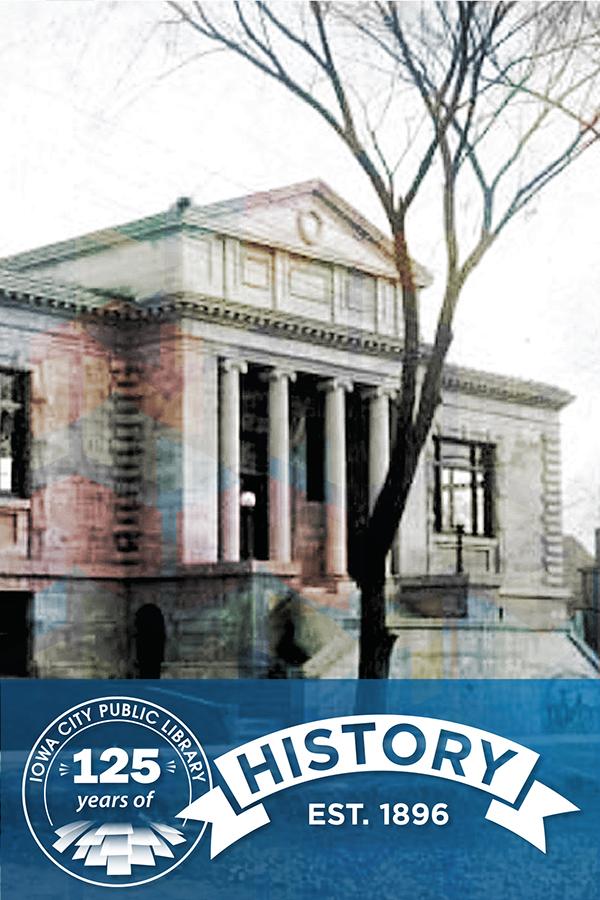Posted by Olivia W on Friday, Oct 8, 2021

1940 – 1950
The beginning of the 1940s saw a slight decrease in book circulations that continued until the end of the decade, and the Iowa City Public Library did not get any large increases in funding. However, the women’s suffrage movement from the previous decades did see an increase in opportunities for women, and the Library Board was part of that trend. In 1942, Ella Van Epps was elected as the first female Library Board President, and she served until 1944. When World War Two began, the Library supported the effort by creating a “War Information File”, which contained information about defense, rationing, gardening, first aid, and enlistment. They also held book sales which benefited the Red Cross. In 1944, Iowa City voters approved the public recreation center and playground program. Jessie B. Gordon, the Library Director, was appointed to the first commission.
In 1946, after almost 23 years of service, Jessie B. Gordon retired from her position as Library Director to run a book store. The Library Board hired Joyce Nienstedt to be the new Library Director. Nienstedt was immediately focused on improving the resources of the Iowa City Public Library, and, in direct contrast to Gordon, did not spend much time engaging with the community. She made the tough choice to save money by buying books from a national wholesaler rather than a local store, and, in 1947, she started a rental collection to provide extra copies of popular fiction books. This was common in public libraries, but the Iowa City Public Library had not offered one. The rental collection continued until the early 1960s.
1950 – 1960
Nienstedt spent much of the early 1950s focusing on repairing and updating the Carnegie building, which had not had major updates for 40 years. She redecorated and reorganized most rooms, advocated for new equipment regularly, purchased new furniture, and got approval for building-wide air-conditioning. In total, the renovations cost around $25,000, which was paid for by a special levy. Once the levy concluded, the Library budget remained much larger than the previous decade. Part of the renovations included the creation of the Jennie Brubaker Music Room, funded by a generous donation from Jennie Brubaker. The Music Room included a Magnavox Windsor Imperial record player and a collection of 33 1/3 RPM Records. This was the first audio collection offered by the Library.
In 1954, the school board terminated their contract with the Iowa City Public Library, which brought an end to the Library providing book collections for in-school use (the precursor to our current AIM library card program). After the termination of the contract, the school board began to build school libraries throughout the district. This decision was perhaps swayed by the post-war baby boom; in 1960 the population of Iowa City was about 33,500, almost triple what it was when the Carnegie building was built. Although the Library’s collection had doubled from 30,000 to almost 60,000 books by 1956, there still were only two books per community member in the Library. There was no additional space in the Carnegie building, which prevented the Library staff from meeting community needs, especially the increased demand for children’s and young adult literature. In 1959, the first joint Library Board and City Council meeting since 1902 was held to determine whether an addition to the Library was needed and how to fund it. The campaign slogan used was, “We Need a New Wing.”
To read more about the history of the library, take a look at our timeline or check out Lolly Egger's book, A Century of Stories.
